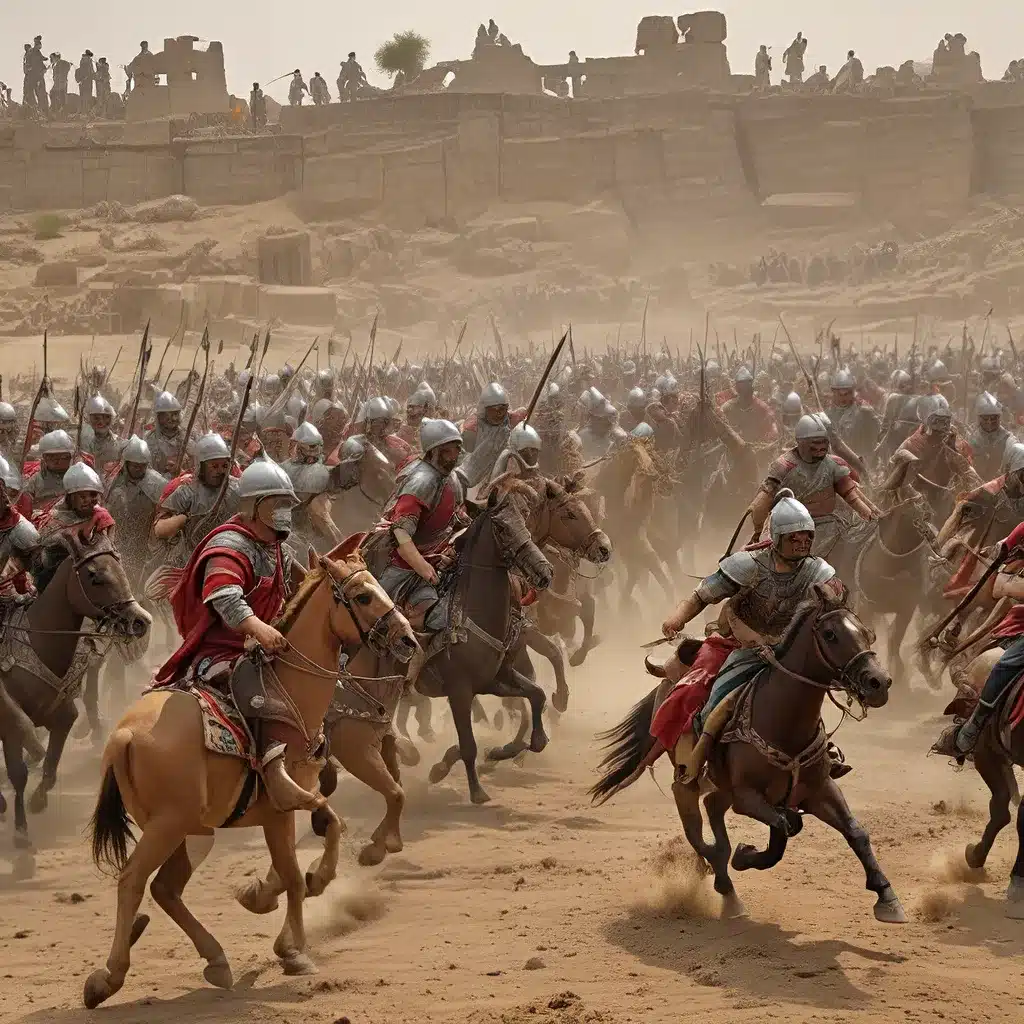
Throughout history, the narratives of warfare have largely focused on the exploits of military commanders, the clash of mighty empires, and the defining battles that shaped the world as we know it. However, these accounts often overlook the stories of the common people, the everyday individuals who lived, fought, and perished during these tumultuous times. Recent archaeological discoveries and advancements in osteoarchaeology have shed new light on the untold stories of ancient warfare, revealing a more comprehensive understanding of the human experience.
Uncovering the Everyday Lives of Ancient Warriors
Traditionally, the study of ancient warfare has been dominated by the analysis of weapons, armor, and battle tactics. While these aspects are undoubtedly crucial to understanding the dynamics of conflict, they often fail to capture the lived experiences of the warriors themselves. Efthymia Nikita, a renowned osteoarchaeologist, has made it her mission to give voice to the forgotten individuals who comprised the vast majority of ancient armies.
Through her meticulous analysis of skeletal remains, Nikita has uncovered a wealth of insights into the daily lives and physical hardships endured by ancient warriors. By studying the bone patterns and pathological lesions on these remains, she has been able to paint a vivid picture of the physical toll that warfare had on these individuals, shedding light on the true cost of conflict.
“Osteoarchaeology gives us direct access to our ancestors – not just the politicians and military men, but the everyday people who comprised the vast majority of our ancestors,” Nikita explains. “With the study of bones, we can form a more well-rounded view of the past, one that includes the untold stories of those who have been forgotten.”
Challenging Preconceptions about Ancient Warfare
One of the most fascinating aspects of Nikita’s work is her ability to challenge long-held assumptions about the nature of ancient warfare. For instance, her research on the Garamantes, a people who inhabited the core of the Sahara Desert for over 1,500 years, has upended the prevailing view that life in the desert was “nasty, brutish, and short.”
Through a comparative analysis of skeletal remains from the Garamantes and other ancient African communities, Nikita found that life in the desert was not necessarily more difficult or shorter than life in more resource-rich environments. Her findings suggest that the Garamantes were highly adaptable and successful in coping with the harsh conditions of the Sahara, challenging the long-held assumption that the desert was an unforgiving and inhospitable place.
Similarly, Nikita’s research on mobility patterns within ancient societies has revealed surprising insights. Contrary to the classical archaeological view that a large number of individuals crossed the Sahara Desert, Nikita’s findings indicate that the desert posed significant limitations to gene flow between the Garamantes and other North African populations. Additionally, her analysis of skeletal remains from Cyprus during the Early Christian and Late Byzantine-Frankish periods showed that mobility was equally low in both men and women, refuting the notion that mobility was predominantly a male-driven phenomenon.
Uncovering the Untold Stories of the Past
Nikita’s work, and the broader field of osteoarchaeology, represent a crucial shift in the way we approach the study of ancient civilizations and warfare. By focusing on the skeletal remains of everyday individuals, researchers can uncover a more comprehensive understanding of the past, one that goes beyond the grand narratives of kings, queens, and military commanders.
For example, a study conducted by Nikita and her colleagues examined two Cypriot communities during the 16th and 17th centuries, a period marked by the transition from Venetian to Ottoman rule. The researchers found that despite the similarities in the way of life between the two communities, one population experienced greater everyday physical stress, as evidenced by more injuries and greater skeletal attrition. This disparity was even observed among the children, suggesting that the hardships of this period were not limited to the adult population.
“In the end, everyone dies – rich and poor, exalted military leaders and slaves,” Nikita reflects. “Whereas the examination of objects in cemeteries can provide much information about the way the living buried the dead, the study of bones will tell an all-inclusive story.”
Bringing the Past to Life through Osteoarchaeology
Nikita’s work, and the broader field of osteoarchaeology, represents a powerful tool for uncovering the untold stories of the past, including the experiences of women, children, and marginalized groups who have often been overlooked in traditional historical narratives.
By focusing on the physical remains of our ancestors, researchers can gain a deeper understanding of the everyday challenges, hardships, and resilience that characterized the human experience throughout history. This knowledge not only enriches our appreciation of the past but also helps us to better understand the shared experiences that connect us all as a species.
As Nikita’s research has demonstrated, the study of ancient skeletal remains can challenge long-held assumptions, reveal unexpected insights, and provide a more holistic view of the human story. In doing so, osteoarchaeology has the power to transform our understanding of ancient warfare and the lived experiences of those who endured it.
Through the continued work of researchers like Efthymia Nikita, the untold stories of the past will continue to be uncovered, shedding new light on the human condition and our shared journey through the annals of history. By exploring these forgotten narratives, we can gain a deeper appreciation for the resilience, adaptability, and shared humanity that has defined the human experience across millennia.


